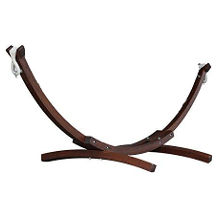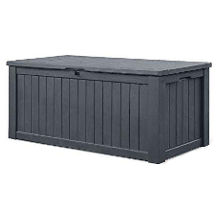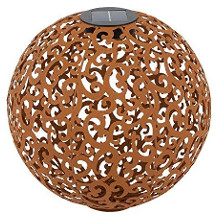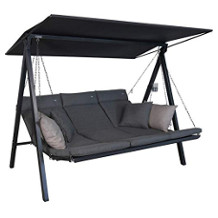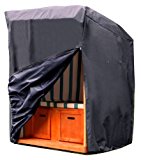Side awning purchasing advice: how to choose the right product
- What You Need to Know
- Side awnings are retractable fabric walls that are attached to walls, posts or the ground.
- They protect terraces, balconies and garden areas from slanting sun rays, wind and prying eyes.
- When not in use, the entire fabric is stowed in the cassette.
- If you need a length of more than 3.5 metres, you are sometimes better off with a double-sided awning.
- The darker the awning fabric, the more effectively it protects against UV radiation.
The awning lies across
A patio or garden is an excellent place to spend time outside with family and friends in fine weather or simply to relax. If you don’t want to be blinded by sunlight, you can install an awning over the seating area. However, such a roof awning only protects against rays that hit vertically. As soon as the sun is a little lower, the light hits the face at an angle. One solution to this problem is a side awning.
Side awnings are rolled-up fabric walls for patios, balconies and gardens that are fixed on one side and extended to the side. The end of the stretched fabric can be hooked into the holder provided. This protects the entire area behind the fabric.
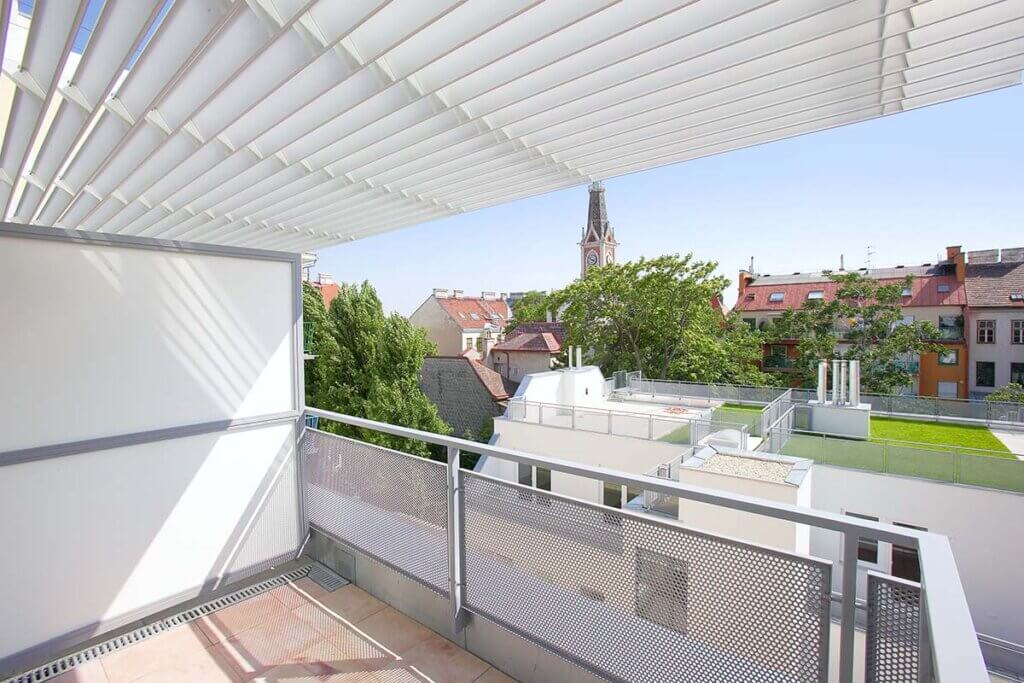
Due to their construction, side awnings belong to the so-called cassette awnings. They consist of a housing or cassette in which an awning fabric is wound around a roll, as well as a retraction mechanism. This is a spring that holds the fabric in position. On the one hand, the mechanism ensures that the extended fabric is tight, and on the other hand, it transports the fabric back into the cassette because the taut spring returns to its original shape by unhooking.
That is why side awnings are practical
Side awnings not only protect against strong sunlight, but also against wind, nosy neighbours and passers-by. Especially if the terrace is positioned facing the street, passers-by can otherwise easily see what you are doing at that moment. With a side awning, it is possible to maintain privacy. At the same time, the side awning is easy to install and handle. Pulling out and hooking in the fabric is very quick, and stowing it away is even quicker thanks to the self-retraction feature. There are even versions that can be stretched around corners.
Since the fabric is not fixed on both sides, users are completely free to decide whether and when the fabric should be stretched. For example, if you want to enjoy the sun, you can leave the fabric in the cassette. When rolled up, the side awning disappears completely into the housing so that it does not disturb the overall appearance of the patio or garden when not in use.
Furthermore, side awnings are available in different colours and patterns so that they can be optimally coordinated with furniture and decorative objects. They can thus be not only a functional protection, but also a decorative element.
What matters when buying
When choosing a side awning, the most important thing is the place of use and the purpose. Depending on whether it is to screen a terrace, a balcony or an open area in the garden and the nature of these, the required type of fastening and the dimensions will differ.
Height
Side awnings for patios are available in three standard heights: 160, 180 and 200 centimetres. A 160 centimetre high side awning is suitable for anyone who wants to screen off a seating area. It protects against wind and reduces dazzling sunlight. However, it only maintains privacy to a limited extent, as many people can simply look over it. The average height of a German adult exceeds 160 centimetres.
Side awnings with a size of 180 centimetres, on the other hand, keep most strangers away. Therefore, they can even be used in places with good visibility, such as a terrace facing a busy road. 160-centimetre side awnings are better suited to areas facing away from roads and pavements.
For those who want to completely shield an area from the sun, wind and prying eyes, 200-centimetre side awnings are ideal. Since they offer complete protection, they are practical, for example, when users want to pursue sporting activities undisturbed. There are also side awnings with a height of 120 centimetres especially for balconies.
Before buying, it makes sense to check the space at the mounting location. Since the housing of the cassette must provide enough space for the awning and the mechanism, it is usually somewhat longer than the height of the awning fabric. It is therefore advisable to add a few centimetres as a lump sum when measuring the mounting location, so that the side awning is not too large to mount in the end.
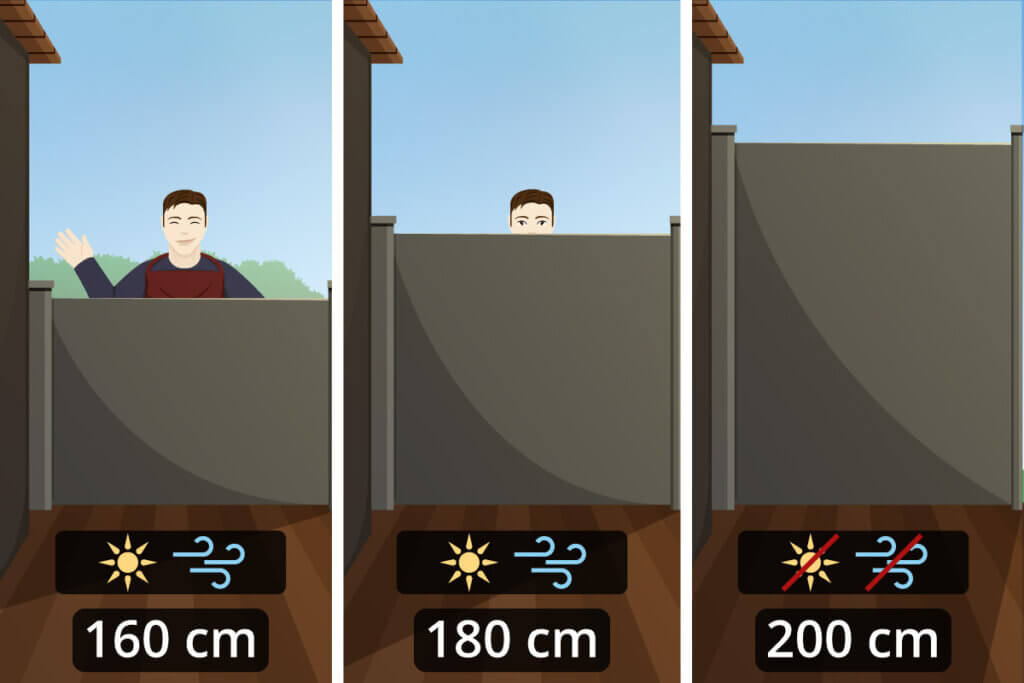
Length
The length of the awning, i.e. how far it can be extended, depends on the dimensions of the place to be screened. Although lengths of up to 300 centimetres are common in the trade, models of around 350 centimetres can also be found. However, the longer a side awning is, the more unstable it is. Similar to sails, the force exerted on large surfaces is greater than on smaller ones: In strong winds, the awning can, in the worst case, break out of the bracket.
In order to screen off large areas nevertheless, there are so-called double side awnings. These are cassettes with two roller walls that can be extended separately from each other. This makes it possible to cover an area with a length of 600 centimetres. Some double awnings are designed in such a way that they can form a corner.
Type of attachment
There are several ways to attach side awnings: for example, to the wall, to the ground or to a post. Which variant is most suitable depends on the nature of the mounting location. If you want to mount the brackets for the side awning on the wall, you should first check whether the wall is also suitable for mounting. On walls made of solid stone, mounting is possible without any problems with the help of a suitable drill. Depending on the material, however, it can happen that these are damaged either directly during installation or when the side awning is in use.
Side awnings need a firm hold because the wind that hits the extended fabric exerts a great pulling force on the fastenings. Otherwise, it can break out of the wall, damaging both. Instead of a wall, the side awning can also be attached to a sturdy post. Two brackets are required for attachment. The first support element is placed a few centimetres above the ground on the wall or post and the second slightly lower than the top of the cassette housing.
In addition, there are feet and floor brackets for mounting. While some floor brackets have plates that can be fixed to the floor with screws, there are other variants that are stuck directly into the floor or set in concrete. When attaching the floor mount, it also depends on the substrate material. A typical installation variant is to mount the cassette on a wall and anchor the extended awning to a small post fixed to the ground.
Many side awnings are not limited to one type of mounting, so it is possible to adapt it exactly to the location. If there is a wall support element in addition to a post for raking in the fabric, the awning can also be stretched between two walls or a wall and an existing fixed post. Manufacturers either sell suitable accessories separately or they are already included in the scope of delivery.
Material and workmanship
A so-called awning fabric is used for side awnings. This is a special technical fabric that is usually made of coated polyacrylic or polyester and has properties such as UV protection or resistance to water pressure.
Depending on the type and amount of yarn used, awning fabrics have different weights. Heavy awning fabrics are more robust than light versions, but the extra weight weighs on the mechanics. In addition, they are more difficult to wrap, which can hinder the cassette mechanism. On average, awning fabrics weigh about 300 grams per square metre. Lighter versions with less than 200 grams per square metre are also used for side awnings.
Awning covers made of polyacrylic are characterised by their colour fastness and are particularly UV-resistant. In addition, the material is very tear-resistant and insensitive to weathering. However, as the fabric is not very flexible, it is not so suitable for rolling up.
The lightweight polyester fabric is used more often for side awnings. It is far easier to roll and therefore fits better in a cassette. Thanks to its high elasticity and so-called spring-back behaviour, the material retains its shape. This makes polyester fabric ideal for large, wide side awnings. Unlike polyacrylic, this fabric is not weatherproof or UV-resistant. To create UV resistance, a layer of protective pigments is used.
Manufacturers use various coatings to make their fabrics resistant to dirt and water. Polyester fabrics often have a coating of the thermoplastic polyvinyl chloride (PVC). In the case of polyacrylic, PTFE (polytetrafluoroethylene), better known as Teflon, is often used. The cassettes must also be able to withstand bad weather. They are often made of hardened aluminium, powder-coated steel or stainless iron.
Colouring
When dyeing polyester awning fabrics, yarn dyeing or piece dyeing is usually used. This means that either white yarn is dyed before the fabric is made or the finished fabric is dyed. Nowadays, not only polyacrylic but also polyester fabrics can be spun-dyed. With this process, it is possible to add colour pigments to the fibres from which the yarn is made. Awning fabric made from spinneret-dyed yarn is particularly colourfast and lightfast. Yarn or piece-dyed fabrics are not nearly as colourfast, so the colour fades over time. This happens most quickly with piece dyeing.
Design
Since the side awning becomes a prominent part of the screened area, it makes sense to coordinate its design with the surroundings to create a pleasant and coherent ambience. They come in both light and dark shades. Light-coloured side awnings have a high reflectivity, which is why they can be quite dazzling in strong sunlight. On the other hand, the seating area is sufficiently illuminated in low ambient light. Dark versions can completely block harmful UV rays and offer high glare protection, but they are less suitable in low light than lighter colours. In addition, dust and pollen from flowers are more visible on light-coloured awning covers than on dark ones.
Light colours such as cream white, beige or light grey are considered neutral, which is why they can be excellently combined with many styles. For a maritime design, for example, red and blue furniture can be combined with a side awning in a beige or off-white colour. Colourful furniture and decorative objects come into their own with a light neutral background. In addition, such side awnings visually soften dark objects. The colour cream white, i.e. white with a yellowish undertone, is an all-rounder. With side awnings in this colour, those who like to experiment can easily try out different styles or redecorate regularly. Light grey can have both a warm and a cool undertone and goes particularly well with plain furniture. If you want to create a serious impression, you can design the terrace with metal furniture and cushions in anthracite, for example.
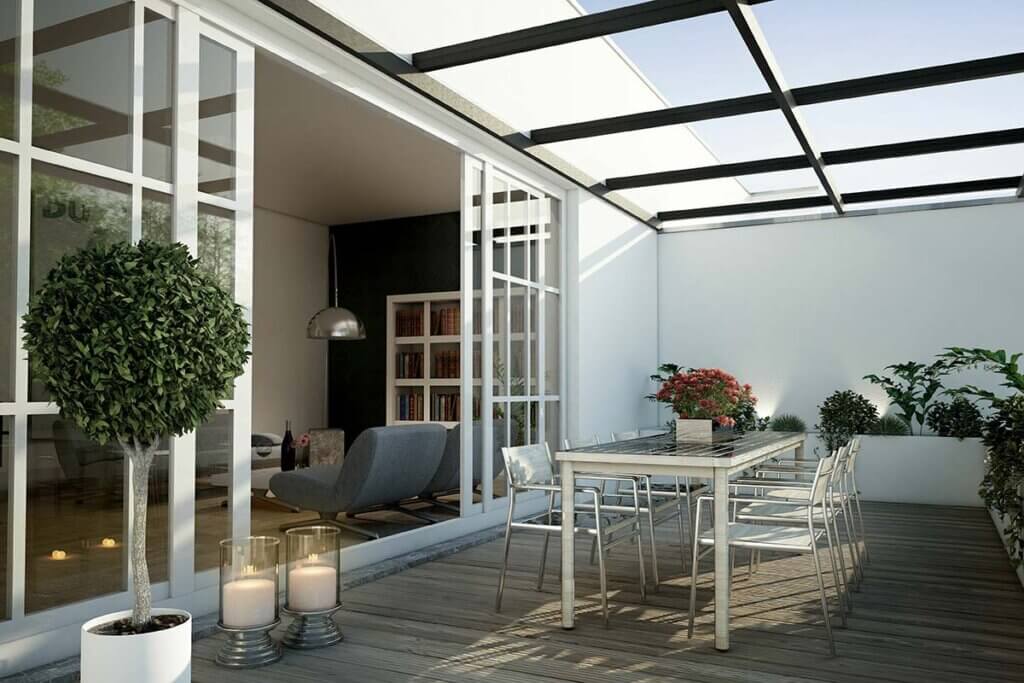
Side awnings in shades such as anthracite, grey or black combine well with light-coloured furniture and decorative objects to lighten the mood. One method, for example, would be to decorate tone-in-tone, but to choose lighter shades for the furnishings, for example dark and light shades of grey. A completely dark interior, on the other hand, can have an oppressive effect. Bright colours, on the other hand, stand out and create contrasting effects. Possible colour combinations include anthracite with strong brown tones and warm colours such as creamy white or black with white Timeless black goes well with both wooden and steel furniture. Dark grey is a simple colour that is ideal for setting off coloured furniture.
Another variation are side awnings with photo prints. On one side there is usually a landscape or nature photo, such as a mountain landscape with a lake in the middle, a forest clearing or a South Sea beach. Depending on the incidence of light, the image on the other side shimmers through. Such photo side awnings are usually a maximum of three metres long. Good designs create a sense of depth. Photo prints are an eye-catcher on any balcony or terrace, but they do not fit well into an overall design.

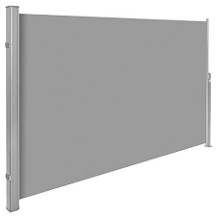
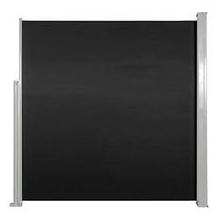
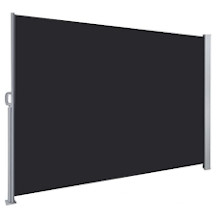
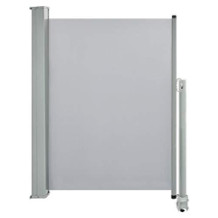
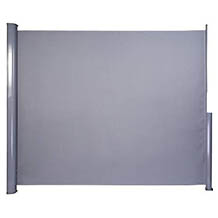
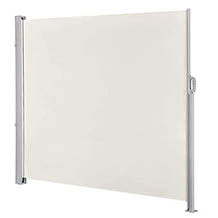
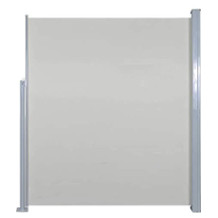

 828 reviews
828 reviews
